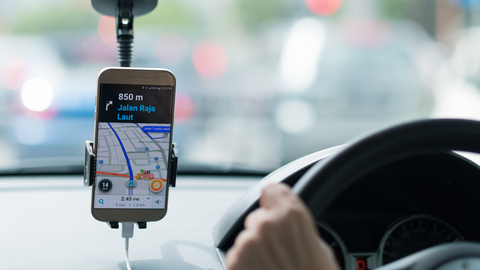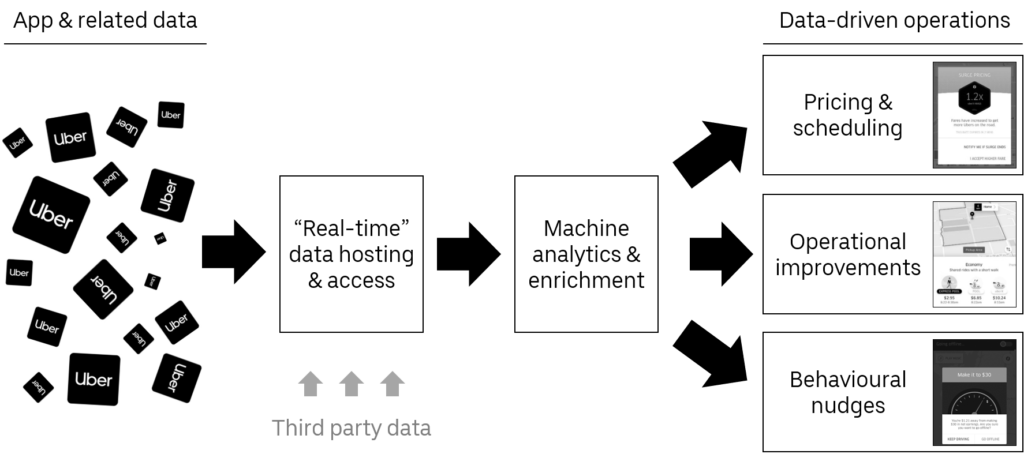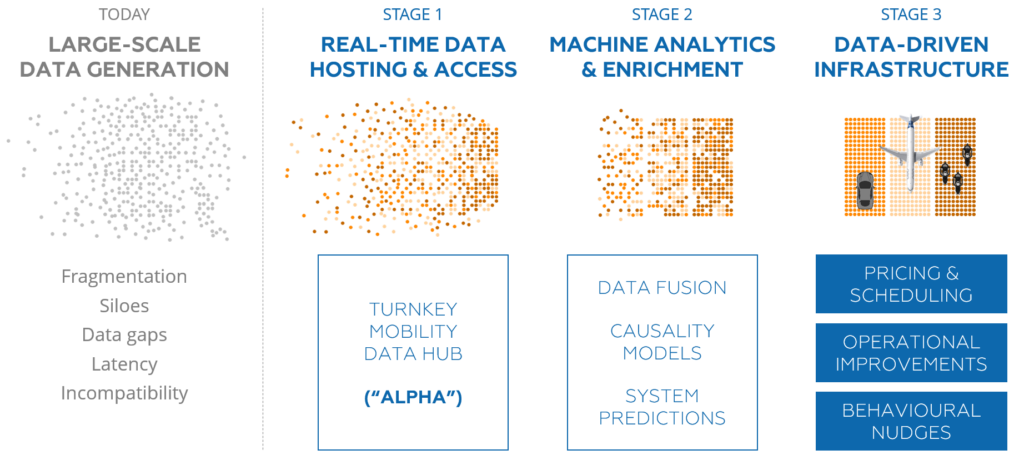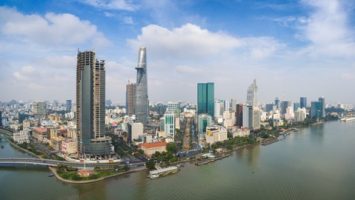
A white paper by Dr. Miles Tackett, Commercial and Strategy Lead at Alchera Technologies
Imagine operating a billion-dollar asset
… with little ability to measure or influence how it’s being used.
Demand for your asset is growing.
And yet, you get little of the upside.
You get all of the downside: your asset deteriorates, your customer experience becomes progressively worse and your ecosystem suffers.
At the same time, those sweating your asset – the protagonists of its decline – see revenue growth, increased market power and satisfied investors.
This is the situation facing operators of urban and intercity road assets today.
Road capacity is fixed. Yet the operator must contend with growing demand, new forms of demand, changing behaviors and ever-greater societal expectations for efficient, affordable and safe mobility. All the while, new enterprise users try to disrupt the status quo.
The future will be even more complex.
Consider, for example, the impact that vast fleets of autonomous vehicles will have on the network; or the impact of mandated, net zero-linked emissions targets for transport.
A CASE FOR CHANGE
The way that infrastructure operators respond will determine the outcome of huge scale financial and socio-economic business cases.
Not to mention, impact the lives of billions of people.
The only sustainable, long-term option for infrastructure operators is to take control of how their assets are used. Only operators can optimize across the full range of challenges, stakeholders and commercial agendas to ensure that infrastructure remains an effective asset for the public good.
There are only three ways in which operators can take control:
- Manage fundamental demand for road use itself, and/ or
- Optimize the whole system for current conditions, and/ or
- Influence the behavior of individual road users.
But, how?
Ironically, ride share apps (such as Uber and Lyft) provide inspiration for how this can be achieved.
LEARNING FROM UBER
For Uber’s value proposition (convenient and affordable transport) to work effectively, the user needs to implicitly cede some control.
Consider your experience of using Uber:
Changes to pricing and scheduling influence passenger demand as the operator tries to balance this with (at that point in time) fixed supply.
“3X surge pricing? That’s ridiculous. Let’s walk.”
“It says it’ll be here in 15 minutes. I’m cancelling.”
Continuous operational improvements optimize at a system-level (often counter-intuitively to individual users), based on an understanding of how numerous variables interact.
“I ordered an UberX and I’ve got a 5-series. :-)”
“Why is my Uber Pool going in that direction?”
Lastly, “nudges” influence the way the passenger behaves, throughout the customer experience – in both obvious and more subtle ways.
“It says it’s quicker to walk two blocks for pickup.”
“Your driver is nearly there. They will start charging after 2 minutes.”
“I can’t do that – it will be bad for my rating.”

Uber’s approach would not be possible without the effective use of big data and analytics.
A powerful combination of ‘live’ operations data (via driver and customer apps), third party data and proprietary internal analytics (see above).
THE OPERATOR TAKES CONTROL
The same combination of real-time data and cutting-edge ML can be applied to road usage. We call this Data-Driven Infrastructure.
Data-Driven Infrastructure will transform how large-scale transport systems are operated and, in turn, the user experience.
In many markets, it will transform funding and business models as well.
Data-Driven Infrastructure will have the potential to be optimized continuously, across interdependent variables such as passenger throughput, air quality and operator revenue.
Uber-like tactics, on a massive, transformational scale.
Going beyond siloed infrastructure operations and individual use cases; to complex, multimodal, multi-owner, multi-operator systems on city- and national-scale.
This will be achieved through the same three fundamental, interdependent levers of pricing and scheduling, operational improvements and behavioral nudges.
1. Pricing and scheduling: the operator of Data-Driven Infrastructure will have the potential to manipulate the cost and availability of road access. For example:
‘Surge’ charges for road access in response to above-target carbon emissions.
Digital ‘Road full – no entry’ periods that schedule above congestion thresholds.
Dynamic pass-through payments from car driver to transit user during peak congestion pricing.
2. Operational improvements: the operator of Data-Driven Infrastructure will have the potential to make ongoing, incremental responses to current road conditions. For example:
One-way grid systems that re-route automatically to remove a traffic bottleneck.
Kerbside that re-purposes dynamically in response to nearby delivery vehicles.
Smart ‘geofencing’ of individual Taxi Operator Licenses to avoid areas of gridlock.
3. Behavioral nudges: the operator of Data-Driven Infrastructure will employ softer, direct and indirect engagement with the road user to effect change. For example:
‘Frequent traveler’ reward schemes linked to transit, cycle and walking journeys.
Limited daily car parking quota for single-occupancy vehicles.
Direct-to-customer influencing enabled by connected car infrastructure (“Why not stop here and walk three blocks?”).
MAKING IT HAPPEN
Shifts in the socio-political environment and advances in technology and connectivity are prompting increasing interest in this space.
It is a big challenge.
To unlock the full potential of Data-Driven Infrastructure requires stakeholders across government, infrastructure and mobility to revisit some fundamental assertions about the role, funding and operations of road networks; to start to think about the system as a whole. Specifically, the following is needed:
Policy & governance that enables operators to play a progressive, active role in the use of their infrastructure.
That enables different stakeholders to balance different objectives (mobility, equality, taxation, environment, etc.); that manages the interplay between strategic and local road operators (and other parts of the built environment); and addresses infrastructure funding and user charging questions (PAYG, private sector, polluter pays, etc.).
A customer value proposition built around ‘net mobility’ and system-level optimization.
That maintains drivers’ ‘rights’, but shifts the balance away from individual vehicles and service providers (MaaS, 3PL, etc.) and towards the affected population as a whole; that considers system-level challenges (congestion, noise, air quality, funding, etc.) to deliver net benefit; and where operators have more accountability for user experience.
Scalable technology solutions that – like Uber – unlock the power and proliferation of data for large-scale, dynamic operations.
That work with the vast array of fragmented and siloed technologies, data feeds, users and workflows – in-house and third-party, legacy and future; that can handle and analyze huge volumes of data across complex networks in real-time; that can control user privacy and data access in multi-stakeholder environments; and that can be trusted to do so when millions of journeys are at stake.
UNLOCKING DATA-DRIVEN INFRASTRUCTURE
The technology requirements for data-driven infrastructure now have a clear development roadmap going forward.

The first step is to make the full range of existing sensor outputs and data feeds around the road environment accessible for consumption in real-time. This is non-trivial; the solution must overcome a multitude of challenges including data silos, latency and incompatibility, as well as questions around data rights and ownership. The complexity increases substantially as the system grows in scale and moves beyond a single point of ownership.
The challenge then is to learn the relationship between different data feeds and variables of the system; to be able to “fill in the blanks”, improve the accuracy of insights and make confident predictions. This is something that neither individual teams nor vertically-integrated solutions can tackle alone. For example: predicting the impact of congestion at a stadium on the operations of the surrounding road network; or determining if NOx targets will be met, based on a view of predicted road activity, weather and current air quality. Learning how one factor affects another, across a complex system in real-time, is the key technology milestone for unlocking the power of data-driven infrastructure.
Many enterprises and institutions are exploring this future.
At Alchera, we are leading the charge in the development of a software-led solution for operators of data-driven infrastructure.
With a current focus on roads – and with future applicability to other major transport infrastructure (airports, transit hubs, ports, etc.), all of which have similar transformational potential.
We have already built the core: a turnkey, cloud-based mobility data hub, Alpha, that provides easy-to-use, very large-scale, real-time data hosting and access.
Alpha is input agnostic and fully interoperable with existing workflows. This enables our customers – and their array of internal teams and external partners – to improve consumption and make better use of their existing sensor and data feeds.
Our focus now is on using our existing real-time datasets (the largest in Europe) and privileged data access to develop proprietary machine learning that is currently unmatched in this space.
In particular, our early work on data fusion and complex system causal inference is getting major infrastructure operators very interested. This is enabling progressive new conversations around the “art of the possible”. For example, one data-driven infrastructure operator could soon have the tools to mitigate the air quality and congestion impact of more than ten million new journeys per year through their asset; and to collaborate, with financial and operational clarity, with the other operators and stakeholders around their ecosystem to deliver robust, multi-modal mass transit.
A scalable approach towards data-driven infrastructure is near.
Let’s keep the momentum building together.
Continue the conversation: miles@alcheratechnologies.com.
Many thanks to Dan Clark, Emil Hewage, Gareth Biggins and Simon Harrison for providing valuable input into earlier drafts of this article.


